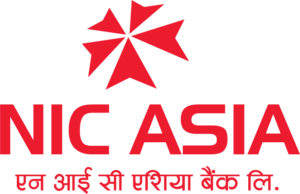

Introduction:
The evolution of technology across the globe has accelerated the adoption of digital payment systems that aim to make human life efficient and enjoyable at the same time. Although cash transactions make up about 97 percent of the transactions done in Nepal – digital transactions are on the rise. One such system that has taken the world by storm is the QR Code payment system.
First developed in Japan for the automotive industry, QR code shorthand for quick response code has been around since the mid-90s and has been used in many contexts ever since. QR code is a two-dimensional code consisting of black squares and dots that can store large information.
Previously, a QR code scanner was necessary to extract the information stored in QR codes. However, the evolution of smartphones has eliminated the need for such QR scanners as most smartphones today have an inbuilt QR code scanner in them. Most notably, the rise of mobile banking applications and digital wallets have QR mechanism integrated into them making QR transactions a hassle-free ordeal.
Consumer behavior:
Today’s consumers consist of a combination of digital natives and digital immigrants. Digital natives – people born after the 1980s – are millennials and generation Z who have been interacting with technology from childhood and have a positive attitude toward the Internet and are seen to have less anxiety about digital transactions. New technology appeals to them and is more likely to use it in their everyday lifestyle. The “digital immigrants” – people born before the 1980s – on the other hand, show less commitment towards using new technology and prefer traditional payment methods.
Nevertheless, digital immigrants are gradually understanding the value of technology and while they may yet show some reluctance in using digital transactions they are more enthusiastic than ever before as society evolves into a more digital-friendly environment. The seamless act of simply opening a smartphone and scanning a QR code to make payments through mobile banking applications or digital wallets makes for the easy and convenient practice of making transactions even for the most reluctant customers.
As the trend of digitization continues to grow bigger in the financial industry, cash transactions are becoming cumbersome. QR technology is gradually becoming more popular in traditionally cash-centric areas. With QR payment systems present from vegetable markets to supermarkets – the trend of using QR as a payment method has a lot of upsides as transactions are done in real-time and it presents itself as good as cash without the physical security risks that come along with cash transactions.
Impact of COVID-19
It is no secret that the global COVID-19 pandemic has radically altered the way we live our lives. As concerns for safe social distancing continue to persist to combat the pandemic, the QR payment method has provided a genuine solution. Without the need to exchange coins and notes for purchases, one can console their mind against the fear of virus transmission by simply concluding transactions using QR codes. The simplicity of the touchless nature of the QR payment method means that consumers can practice social distancing while making their purchases in real-time. This has led to merchants integrating QR into their businesses to appeal to the consumers to buy from them while alleviating their fears.
As cash is transferred virtually, another fear that consumers might have is that of the security of such transactions. Today there is no need for a QR code generator or QR code maker since all of it is done digitally through the user’s mobile phones. To use QR payment one must open the mobile banking application or digital wallet of their choice (as almost all major mobile banking applications and digital wallets support this feature) and find the scan QR code option, and put the camera in front of the code. Then the user must enter the amount and proceed with the payment. This option is fairly secure as one can verify the name of the user after scanning the code. In case, if the name of the merchant and/or brand does not match, the user can always cancel the transaction. The QR code itself is difficult to tamper with. Hence, there is less chance of a scam.
Furthermore, the data that gets transferred through the QR codes are encrypted ensuring that the details of the user are safe. However, one must always be mindful of the source of QR codes and be wary of fraudsters. QR payment method will only be used for making transactions and both parties—the sender and the receiver—are never asked to share their important details.
The current scenario in Nepal:
The use of the QR payment system has been positively welcomed by the Nepalese market with monthly transactions hovering above NRs 1 Billion. Currently, Fonepay, Firstpay, and Union Pay have been providing the QR services in partnership with various banking institutions and digital wallets. The wave of QR payment method has partly also been due to such institutions incentivizing the use of QR payments by providing various incentives in form of discounts and cashback to the consumers.
The recently appointed Governor of Nepal Rastra Bank (NRB) Mr. Maha Prasad Adhikari has supported the QR code payment method as he aims to make the entire economy technologically-friendly.
NIC ASIA Bank, currently in partnership with all three QR acquiring services, has been providing various cashback offers and discounts to entice its consumer base to start using its Mobile Banking application so that they can use QR codes as a means of digital transaction.
It may very much take time to completely displace cash transactions, nonetheless, the QR payment method with its simplicity in usage, real-time transactions, and a secure medium of making digital payment means that it is here to stay and provide a healthy alternative to traditional payment methods.
Tap here to apply for QR online or you can scan this.
Feel free to share this article if you like it.
Share in


Leave A Comment